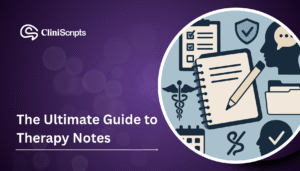Learn what mental health professionals need to know about PTSD ICD-10 codes, including diagnosis, treatment, documentation, and coding best practices.
Post-Traumatic Stress Disorder (PTSD) is a multifaceted mental health issue that can develop after someone has experienced or witnessed a traumatic event. For mental health professionals, it’s essential to understand the intricacies of PTSD—not just for accurate diagnosis and treatment, but also to effectively handle the complexities of healthcare documentation, coding, and insurance billing. Familiarity with the ICD-10 classification system and the specific codes associated with PTSD is vital. This blog post is designed to clarify the ICD-10 framework for PTSD and what it means for those working in mental health.
What is PTSD ICD-10 and Why It Matters for Mental Health Professionals
The International Classification of Diseases, 10th Revision (ICD-10) serves as the worldwide benchmark for categorizing health conditions and diseases. Created by the World Health Organization (WHO), it offers a detailed system for coding diagnoses, which helps improve communication among healthcare providers and simplifies the billing process. For those in the mental health field, being well-versed in ICD-10 codes not only boosts diagnostic precision but also guarantees that clients get the right care, including insurance coverage.
Understanding PTSD ICD-10 Codes: F43.10, F43.11, and F43.12 Explained
When it comes to the ICD-10 framework, PTSD is mainly classified under the code F43.1. This classification can be broken down even further based on the specific symptoms and how long they’ve been present:
F43.10: Post-traumatic stress disorder, unspecified
F43.11: Post-traumatic stress disorder, acute (symptoms lasting less than three months)
F43.12: Post-traumatic stress disorder, chronic (symptoms lasting more than three months)
Grasping these differences is crucial for proper documentation and treatment planning. For example, understanding whether a client is dealing with acute or chronic PTSD can significantly affect the types of therapeutic approaches used.
Subtypes of PTSD According to the ICD-10 Classification
It’s important to recognize that PTSD can show up in different ways, influenced by factors like a person’s resilience, the type of trauma experienced, and any existing mental health issues. The ICD-10 outlines several characteristics commonly linked to PTSD, which can include:
- Reliving traumatic experiences through flashbacks or nightmares
- Steering clear of anything that reminds them of the trauma
- Experiencing negative shifts in mood or thought patterns
- Increased arousal, such as being overly alert or reactive
In real-world practice, mental health professionals must carry out comprehensive assessments to accurately pinpoint these characteristics. Using standardized self-report questionnaires can really help in getting a clearer understanding of what the client is going through.
PTSD ICD-10 Diagnostic Challenges and Considerations
In today’s digital age, misinformation about mental health—especially conditions like PTSD—can spread rapidly on platforms like TikTok, leading to confusion among clients and even clinicians. It’s important for professionals to stay informed and critically evaluate popular narratives. For a deeper look into how social media impacts mental health literacy, this article on viral TikToks and misinformation offers insightful commentary.
Diagnosing PTSD goes beyond just checking off boxes according to ICD-10 criteria. The overlap of PTSD with other mental health issues like depression and anxiety can make the diagnostic journey a bit tricky. Here are some practical points to consider:
- Comorbid Conditions: A lot of people with PTSD also face other challenges, such as depression or substance abuse. Understanding how these issues interact with PTSD is key to crafting a well-rounded treatment plan.
- Cultural Sensitivity: Trauma can show up in various ways depending on cultural backgrounds. It’s vital to practice active listening and adopt a culturally aware approach during assessments.
- Client History: A thorough trauma history can help distinguish PTSD from more temporary stress reactions or other mental health disorders. Taking the time to delve into a client’s background can provide valuable insights that guide the treatment process.
Treatment Modalities for PTSD
Creating a treatment plan for a client with PTSD should be grounded in evidence and can involve a variety of therapeutic approaches. One of the most recognized methods is Cognitive Behavioral Therapy (CBT), especially when it’s focused on trauma. Other effective strategies might include:
- Eye Movement Desensitization and Reprocessing (EMDR)
- Medication management, particularly with SSRIs and SNRIs
- Mindfulness practices and stress-reduction techniques
As a mental health professional, having a solid understanding of these options allows you to provide personalized care that truly addresses the individual needs of each client.
Documenting PTSD ICD-10 Treatment Using Therapy Notes and Transcription Services
Accurate documentation of diagnosis and treatment isn’t just a legal necessity; it’s also a vital way to keep track of how clients are doing. Regularly updating treatment plans is crucial, especially when it comes to noting any shifts in symptoms or how well the therapy is working. Using Therapy Notes and Therapy Transcription Services to maintain thorough notes that align with ICD-10 codes, you’ll improve communication with other healthcare providers and payers, making everything clearer and more effective.
Conclusion
As mental health professionals, it’s crucial to grasp the subtleties of PTSD and how it fits into the ICD-10 framework. This understanding is key to delivering well-rounded care. By getting a handle on the diagnostic criteria, treatment options, and proper documentation—including Medical Transcription for Mental Health and how to transcribe audio to text—you can provide better support to your clients on their healing journeys. Keep in mind that each client is one-of-a-kind, and fostering an empathetic and knowledgeable approach is essential for building strong therapeutic relationships and achieving positive outcomes.
Want to improve how you document PTSD cases in line with ICD-10 standards? Check out our resources on writing SOAP note examples for mental health and mastering compliant therapy notes to make your process smoother and more effective.











